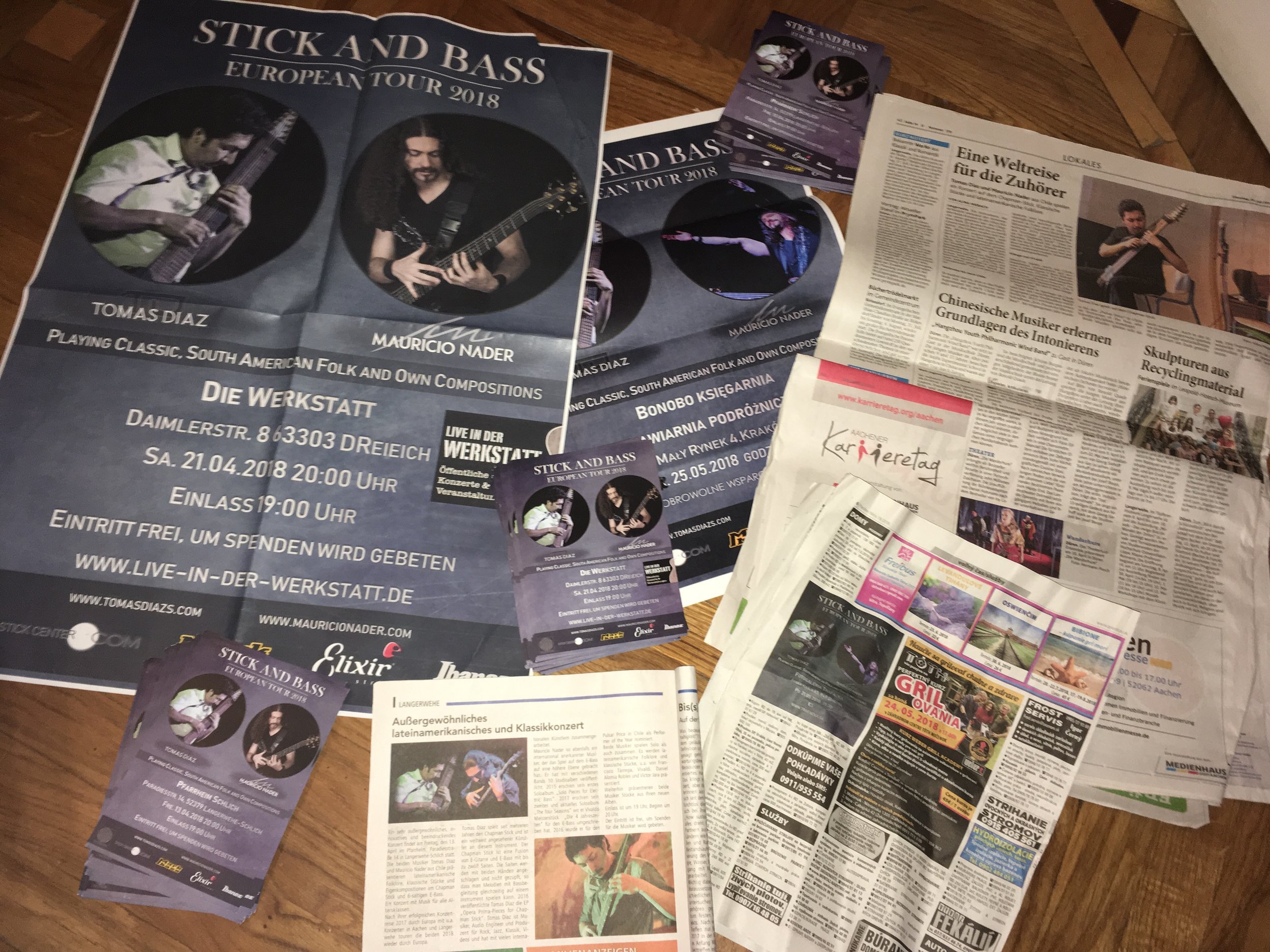How to self-manage a tour. Part 3: Promotion
For a self-managed tour, once the concerts are booked, the route drawn up and the logistics resolved, a very important element follows: the promotion of each concert, because however well organized everything is, it would be a shame if no one attended each of the dates.
There is no one right way to promote, since each case depends on the artist and his or her fan base in each place where the concert is to be held. It could be that this base is non-existent, and the objective of the concert is to find the first fans; or the artist has a solid legion of followers who are waiting for his/her visit, either for the first time or as a recurring event.
Regardless of this, there is one key figure that should not be overlooked, and that is the promoter, that is, a person who is in charge of spreading the word about the concert in the city that is going to take place. This person can be the same person who organizes the concert, or someone different (hired by the artist or the organizer), or even the same artist working remotely. Whoever it is, it is essential that someone is in charge of disseminating the event, and both the artist and the promoter each have essential roles to play. Let's see what they are:
The role of the artist in the promotion consists basically in generating content to enthuse people to attend the concert, and providing it to the promoter. This content is usually the following:
Graphics and logos for making posters, or even the already designed poster
High quality photographs of the artist
Full biography of the artist for press releases and interviews
All kinds of videos, from video clips, live videos, to videos for the social networks calling for the event.
It also helps a lot if the artist uploads by himself promotional content of the event through their own social networks.
The role of the promoter is to be constantly working and distributing this content through the appropriate channels, so that it reaches the people who know the artist, or who might like it if they don't know him/her. In addition, the promotion has to start from a sufficient time according to the amount of people that we want to attend the event. Therefore, the tasks of the promoter would be:
To send information about the event to the press and local media
To coordinate interviews with local media
The constant diffusion of the event in social networks
The dissemination of event information on mailing lists
Printing and distribution of graphic material (posters and fliers)
The coordination of competitions in networks and local media
The diffusion with the artist in person, in visits to media and TV
Coordinate other types of dissemination with the artist, for example meet and greet, clinics, etc.
It is important to understand that within these lists, the work of external professionals is needed, such as a graphic designer (for graphics and posters), a printer if necessary, and also a journalist (to prepare press releases, for example), among others. This is why these items must be considered in the tour budget, or even from the promoter itself.
Finally, in case the artist is the promoter, he has to do both, something that is not easy, especially working remotely before the tour starts. This case occurs when the artist hired a place directly to do a concert, without having a manager in between.
With a very good promotion, there are many more possibilities that people will attend the event, and that it will be an unforgettable occasion for all the participants: artist, managers, and audience.
